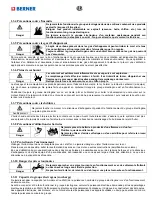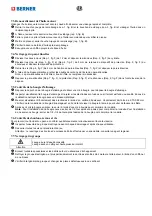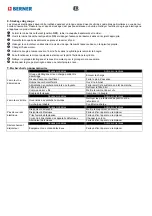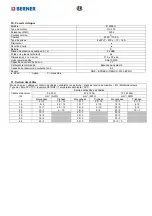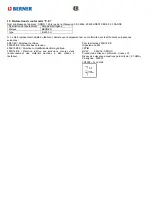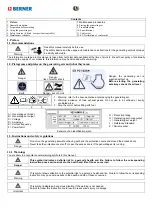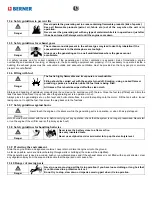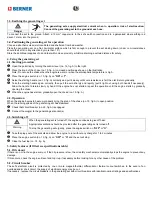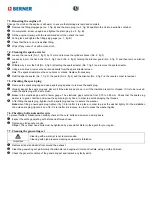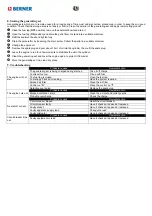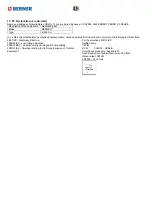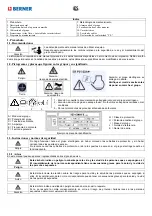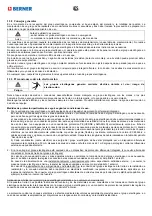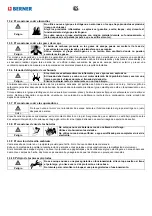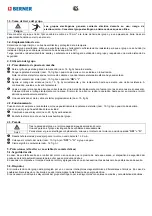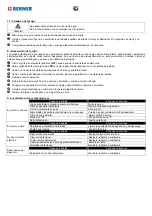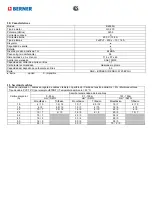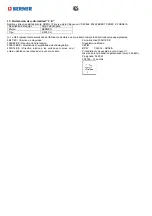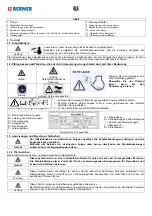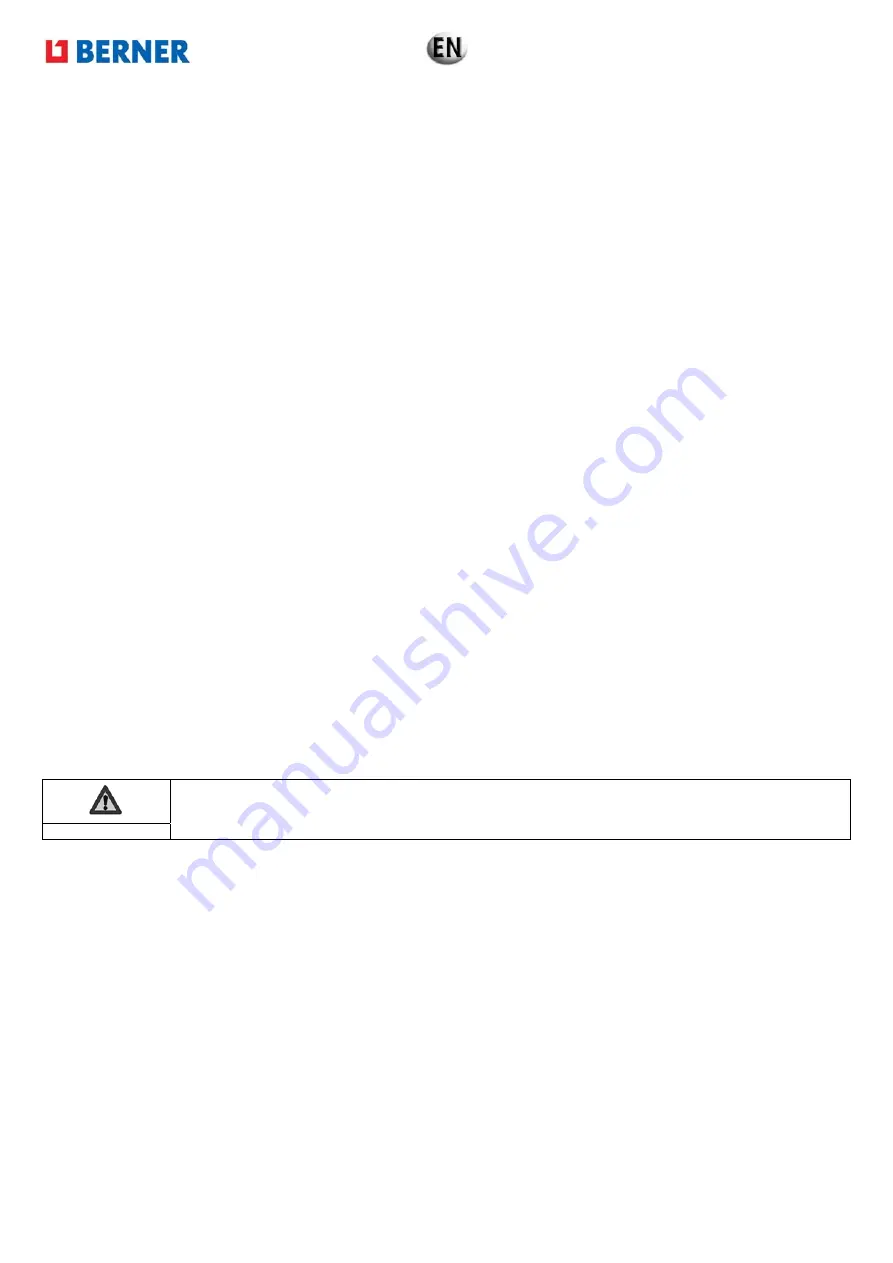
7.3.
Renewing the engine oil
Change the oil when the engine is still warm, to ensure that drainage is rapid and complete.
n
Remove the filling plug-gauge (no. 1, fig. B) and the drain plug (no. 3, fig. B) and drain the oil into a suitable container.
o
On completion, screw up again and tighten the drain plug (no. 3, fig. B).
p
Fill the engine oil sump with the recommended oil, then check the level.
q
Put in place and tighten the filling plug-gauge (no. 1, fig. B).
r
Check that there is no oil leak after filling.
s
Wipe off any trace of oil with a clean cloth.
7.4.
Cleaning the spark arrester
n
Loosen the two nuts (No. 1, fig F) by 12 mm and remove the cylinder silencer (No. 2, fig F).
o
Loosen by 5 mm the five bolts (No. 3, fig F) and (No. 4, fig F) holding the silencer guard (No. 5, fig F) and then remove silencer
guard.
p
Withdraw by 4 mm the bolt (No. 6, fig F) attaching the spark arrester (No. 7, fig F) and remove the spark arrester.
q
Using a wire brush, remove the carbon deposits from the spark arrester screen.
Note: The spark arrester must have no holes or cracks. Replace if necessary.
r
Refit the spark arrester (No. 7, fig F), the guard (No. 5, fig F) and the silencer (No. 2, fig F) in the reverse order to removal.
7.5.
Checking the spark plug
n
Remove the spark plug cap and use a spark plug spanner to remove the spark plug.
o
Visually inspect the spark plug and discard it if the electrodes are worn or if the insulation is split or chipped. If it is to be re-used,
clean the spark plug with a wire brush.
p
Measure the electrode gap with a feeler gauge. The electrode gap should be from 0.70 to 0.80 mm. Check that the spark plug
washer is in good condition and screw the spark plug in by hand, in order to avoid damaging the threads.
q
After fitting the spark plug, tighten it with a spark plug spanner to secure the washer.
Note
: when fitting a new spark plug, tighten it by 1/2 turn after it is in place, in order to press the washer tightly. For the installation
of an old spark plug, tighten it by a 1/8–1/4 turn after it is in place, in order to press the washer tightly.
7.6.
Checking bolts, nuts and screws
To prevent faults or breakdowns, carefully check all the nuts, bolts and screws on a daily basis.
n
Inspect the entire generating set before and after each use.
o
Tighten any loose nuts or bolts.
Danger: The cylinder head bolts must be tightened by a specialist. Refer to the agent for your region.
7.7.
Cleaning the generating set
Important
Cleaning with a water jet is not recommended.
Cleaning with high pressure cleaning equipment is forbidden.
n
Remove all dust and debris from around the exhaust.
o
Clean the generating set, particularly the alternator and engine air inlets and outlets, using a cloth and brush.
p
Check the general condition of the generating set and replace any faulty parts.

